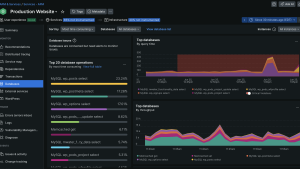Green fintech is a product category that combines business value with real-world benefit. A 2021 study from Deloitte on consumer attitudes toward sustainability found that nearly 1 in 10 respondents had already changed their personal financial investments to include ethical or sustainability-related options. Nearly 1 in 3 stopped buying certain brands or products due to sustainability concerns. New regulations are also coming in. The UN Environment Program proposed a new global digital ecosystem for greater collaboration between stakeholders regarding climate and biodiversity impacts in 2021.
Green fintech products include:
- Carbon calculators that analyze spending patterns and calculate carbon emissions from purchases.
- Green loan products that support consumers and businesses in sustainable initiatives, like energy retrofitting buildings and homes or supporting farmers’ move to sustainable agriculture practices.
- Sustainable investment and wealth management products that move investment into sustainable funds and pensions.
- Enterprise dashboards that report on the environmental social governance metrics of supply chains.
Many green fintech products focus on individual consumers by providing insights into spending habits. While raising individual awareness is important, many consumers are already doing what they can to address climate impacts. Instead, businesses, enterprises, and sectors should adapt their decision-making, investments, and operational processes.
Design thinking can speed up green product innovation and market fit by identifying customer needs and pain points. Teams can then build solutions iteratively that ensure customers' needs are being met. Start with the design thinking process by looking into what use cases there are for potential products based on already existing APIs.
To ideate products for sustainability, consider these three design-thinking steps:
1. Widen the target market.
- Identify the needs and user journeys of businesses, enterprises, and industry sectors to move beyond individual/household segments. For example, the majority of greenhouse gasses are generated by buildings’ energy use, the transport and logistics sector, and from land use like agricultural practices.
- Research target markets in these sectors to understand their needs to identify new products and features. An example of some questions to ask: What financial products do building facility managers need? What do farmers need? What products could help businesses move their logistics operations to more sustainable processes?
2. Consider high-impact categories.
- Write down the product's expected impact.
- Brainstorm potential product and feature actions expected from your product's users. For example, if you want to help building managers reduce the costs of heating, what are the ways your product can help? And what impact will it have?
- Map out the impact pathway or logic flow you expect. Some products may have greater opportunities than others. Some may have a positive impact on one area but reduce action in others. This may be a little theoretical at first, as you are breaking new ground and don’t have the evidence yet.
- Be clear about your expected impact as you introduce monitoring processes so that you can collect metrics and measure them. You could estimate a unit value for each user action so that later, you can calculate the overall impact generated from your solution.
3. Create features with action in mind.
- Consider which actionable features to add to your product.
- Focus on enabling your users to act on information to change their behavior or spending. For example, carbon calculators are of limited value if they are not coupled with product switching choices that can be made at the time of purchase.
- Employ in-app features to increase sustainability, like supplier switching to a more renewable energy plan.
Metrics to inspire product ideation
Measuring sustainability categories is a fairly new field of metrics. This is where the EU’s Sustainable Activities taxonomy can be a help. It classifies six important environmental objectives: climate change mitigation, climate change adaptation, water and marine resources, circular economy, pollution, and biodiversity.
Any potential product impact is then categorized as either enabling or contributing activities:
- Enabling activities raise awareness to improve environmental status, like the carbon calculator.
- Contributing activities directly improve environmental status through their own action, like in-app product switching.
App developers have strong skills in monitoring and using data to design products. These skills can be used to advance green fintech product development. App developers use hypothesis testing for product features and impacts all the time: including A/B testing and conversion rate optimization testing. These practices can be applied to green fintech product development. As you build your product features, introduce monitoring processes and collect metrics to measure whether your app is creating the impacts you are intending.
Application monitoring metrics are a good place to start when monitoring green fintech products: bounce rate, session length, and page load time for a clear picture of user engagement. For example, the success rate of users connecting their bank account to your app shows the number of users interacting with your product.
Tracking user actions in your app, such as the number of users switching to greener in-app choices, can help calculate impact, such as the amount of energy saved per quarter from the user actions. By tracking user actions and their expected climate impact, you can start to have a holistic picture of the total positive climate impact that your app generates.
Next steps
- Read more resources on building trustworthy fintech with consumer consent workflows, three approaches to IT modernization for banks, and adopting and building consistent API processes.
- New Relic supports and provides open source and open standards projects. Learn about our ESG practice and read our 2022 report.
- Get free access to all of New Relic with 100 GB/month of free data ingest, one free full access user, and unlimited free basic users.
The views expressed on this blog are those of the author and do not necessarily reflect the views of New Relic. Any solutions offered by the author are environment-specific and not part of the commercial solutions or support offered by New Relic. Please join us exclusively at the Explorers Hub (discuss.newrelic.com) for questions and support related to this blog post. This blog may contain links to content on third-party sites. By providing such links, New Relic does not adopt, guarantee, approve or endorse the information, views or products available on such sites.



